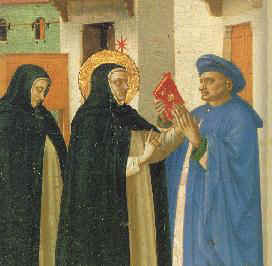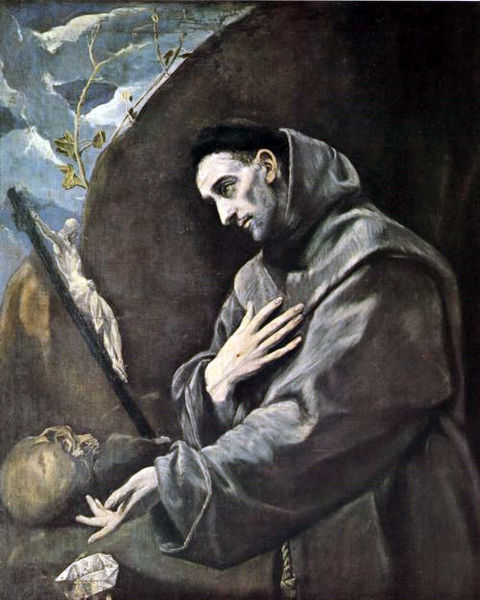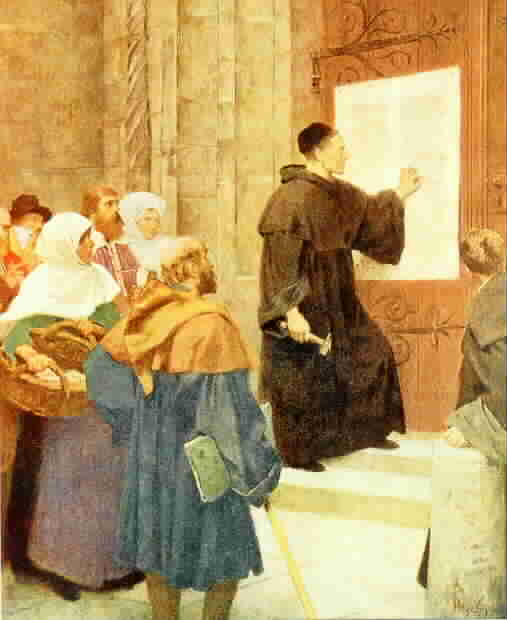Mendicant orders
The term mendicant ( mendicants, mendicare from Latin " begging " ) refers to religious communities that their rule, according not allowed to own property, but poverty is particularly incumbent. They earn their livelihood by work, donations to the respective community and begging.
Mendicant orders of Western monasticism
Even before the mendicant orders existed in the medieval church of a broad effort to practice the Vita apostolica. Since these movements (eg Humiliati, Waldensians ) were not recognized and approved by the church, they developed to partially against ecclesial movements. Only a new politics of the Church (especially of Pope Innocent III. ) Made these efforts useful in the mendicant orders of the Church.
The Western mendicant orders arose in the 13th century as a reform order. They go beyond the requirement of the pre-existing religious communities to renounce personal possessions, also by refusing any ownership for their communities. The male members were not - as the members of monastic orders - linked to a particular monastery.
As the "four mendicant orders " of the Middle Ages refers to the Dominicans, the Franciscan Order ( with the spin-offs Conventual and Capuchin Poor Clares, and the ), Carmelite and Augustinian hermits; later, there were, among others, still the Servites Mercedarians added.
The mendicant orders spread very rapidly in the 13th century over the entire Christian West and Central Europe. Unlike the previously known medals they did not seek the spatial seclusion, but could be preferably low in the cities. Your male religious branches unfolded there a range of activities as a preacher, teacher and pastor. Thus they gained great influence on the religious life of the emerging medieval cities. At the universities they dominated long science.
The spacious, initially quite simple mendicant churches were built as a sermon for large crowds and influenced the church of the High and Late Middle Ages. The monastery buildings were adapted to urban conditions, in contrast to the traditional monastic communities that have come up with their monasteries in the country, mostly far away located from the towns.
The internal organization of the mendicant orders showed significant democratic elements: The individual monasteries or convents elected representatives, elected in national assemblies, the provincial chapters or General Chapters, the superiors of the Order, ie the Provincial Priors or the Prior General. This line offices were - unlike the previous Order - offices on time, which are not exercised by those elected for life.
The two great mendicant orders of the Franciscans and Dominicans were for two centuries focus religious and scientific life of the time. From them are many great theologians ( scholastics as mystics ), notorious representatives of the Inquisition, significant pastors such as Berthold of Regensburg and poets such as Jacopone da Todi and Thomas of Celano ( stabat mater, dies irae ) emerged.
View of the Orthodox Church
The Orthodox Church has no mendicant orders; according to their ideal monks to eat by their own labor, and charity to benefit the poor involuntarily.










